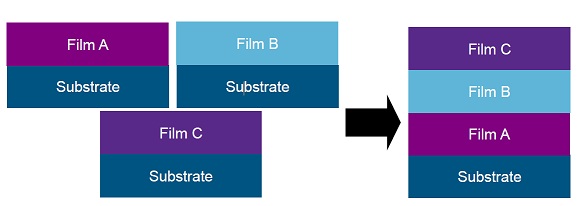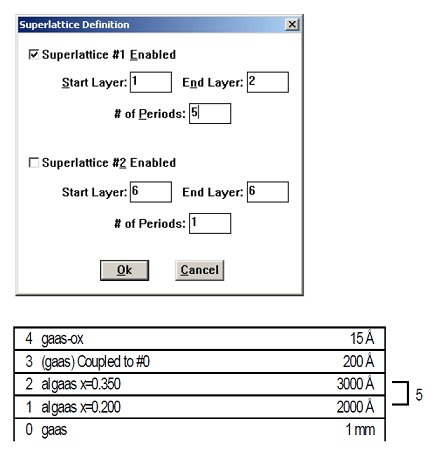Multi-Layer Strategies
Contents
1 Preferred Method #1
2 Preferred Method #2
3 Multilayer Fit Strategy
3.1 Strategy #1
3.2 Strategy #2
3.3 Additional Strategy
4 Repeated Layer Structures
1. Preferred Method #1
- Measure n,k from single-layers: use dispersion models.
- Fit thickness only.
- If poor fit, add dispersion parms. for least stable film.

2. Preferred Method #2
- Measure n,k for each “new” layer with previous layers fixed: use dispersion models.
- If poor fit, add thickness and then dispersion parameters for previous layers.

3. Multilayer Fit Strategy
3.1 Strategy #1
- Measure “n, k” from single layer samples.
- Then, fit thicknesses only for multi-layers.
3.2 Strategy #2
- Fix “n, k” for known layers.
- Use dispersion or alloy models for unknown layers.
3.3 Additional Strategy
- If same coating is repeated in stack, use same (coupled) optical constants for each.
4. Repeated Layer Structures
- WVASE32 allows user to vary simply model repeated structures…“Superlattices”.
- Thickness and optical constants automatically coupled in repeated layers.

